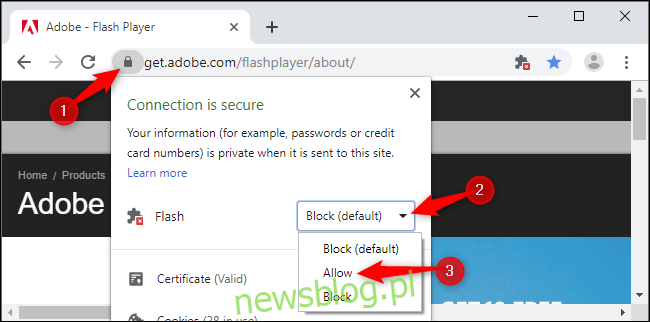

- #Latest version of adobe flash player for google chrome how to
- #Latest version of adobe flash player for google chrome mac os
- #Latest version of adobe flash player for google chrome free
The emulator is able to work in all modern operating systems as a separate desktop application, as well as in all popular browsers (Firefox, Safari, Chrome, Edge, Brave, Opera, Vivaldi) thanks to the use of WebAssembly. With this tool, you will be able to play Flash content as if Flash is still installed without any problems. The developers of the project promise to gradually expand compatibility with flash in the future. Early Flash animations and games will run fine.

It should be noted that at the moment not all Flash content can be played using the emulator, but most can still be played. Ruffle detects all existing Flash content on a website and automatically processes it in the Ruffle Player to ensure smooth updates for websites that still rely on Flash content.
#Latest version of adobe flash player for google chrome mac os
The emulator is able to work in all modern operating systems (Microsoft Windows, Mac OS X, Linux) as a standalone desktop application, as well as in all popular web browsers (Mozilla Firefox, Safari, Google Chrome, Microsoft Edge, Brave, Opera, Vivaldi) thanks to using WebAssembly. With this application, you can easily play Flash content as if the Flash is still installed.
#Latest version of adobe flash player for google chrome free
(No, there’s no way to have Chrome automatically play Flash anymore.Ruffle is a free Adobe Flash Player emulator written in the Rust programming language. Rather than Chrome automatically blocking Flash on all websites, you can set Chrome to ask before displaying Flash content. Google seriously wants Chrome users to stop using Flash, so it’s making the Flash process annoying on purpose. If you use Flash frequently on a particular website, you’ll have to do this repeatedly.

Here’s the bad news: whenever you restart your browser, Chrome erases this list. Alternatively, you can head to chrome://settings/content/flash to view it. Whenever you allow Flash for a website, it’s added to the allow list-click the blocked plugin icon and click “Manage” to see it. To run all Flash objects on the page-including any hidden Flash objects running in the background-click the blocked plugin icon at the right side of the Omnibox and click “Run Flash this time.” To run an individual Flash object, click its Play button. To enable Flash for the site, click the lock icon at the left side of the Omnibox (address bar), click the “Flash” box, and then click “Allow.”Ĭhrome prompts you to reload the page-click “Reload.”Įven after you reload the page, any Flash content won’t be loaded-you have to click it to load it. When you visit a website that uses Flash, you see a “Plugin blocked” message at the right side of Chrome’s Omnibox or address bar. Chrome’s increasingly aggressive moves are supposed to encourage websites to move away from Flash while they still have plenty of time to do so. If you use Flash, you still have nearly one and a half years until it’s gone. Mozilla is even more aggressive-it will remove Flash support entirely in early 2020. Adobe will also end support for Flash at the end of 2020. Instead, Chrome blocks Flash by default with the message “Flash was blocked on this page.” If you re-enable Flash in Chrome, you see a message that says, “Flash Player will no longer be supported after December 2020,” with a button to turn off Flash.Īs Google explains, when the ball drops on New Year’s Eve, 2020, the countdown will also be counting down to the end of Flash.
#Latest version of adobe flash player for google chrome how to
RELATED: How to Use Adobe Flash in 2021 and Beyondįlash isn’t completely gone-yet. Do you still need Flash content? Here are some tips for how you can still run Flash, in 2021 and into the future. Update: As of January 2021, Flash is no longer officially supported.


 0 kommentar(er)
0 kommentar(er)
